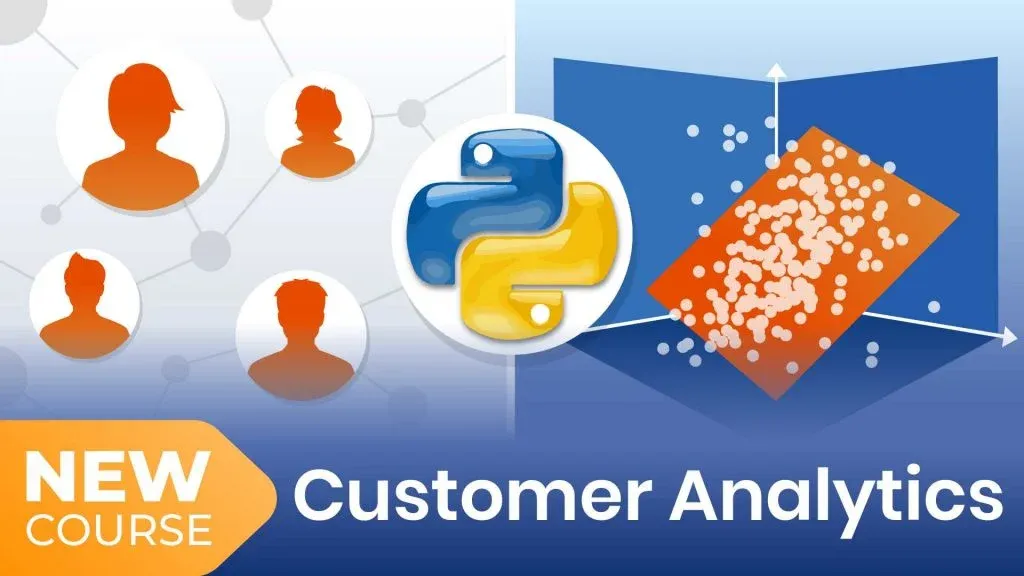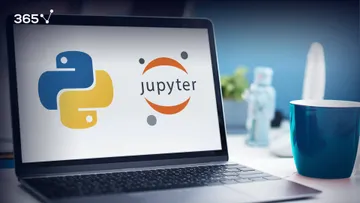
Customer Analytics in Python
Hi everyone,
I’m Elitsa Kaloyanova – a Computational Biologist and Course Instructor at 365 Data Science.
At 365, we are committed to helping aspiring data science professionals on their journey to success. With that in mind, we constantly strive to create courses that expand our students’ industry-relevant knowledge and help them acquire the latest in-demand skills.
That’s why I’m excited to announce the release of our brand-new course - Customer Analytics in Python!
In this post, I’ll share with you why Customer Analytics is a topic every aspiring data scientist should explore. I’ll introduce you to all the features of the course and what you can expect to learn from it. In addition, I’ll also tell you more about the educational background and work experience of the authors of the course – Iliya Valchanov, Nikolay Georgiev, and myself - at the end of the post.
All three of us collaborated to provide the 365 students with the most valuable methods and approaches that customer analytics can offer. So, let’s see what these are, shall we?
The 365 Data Science Customer Analytics in Python Course
With the 365 Customer Analytics course, we aimed to help you master techniques that are applicable to many different industries, so you can perform to the fullest of your potential.
The theory and practical skills you’ll learn in the course are used not only in the KYC (“know your customer”) part of Customer Analytics, but also in unsupervised, supervised, and deep learning - one of the fastest-growing areas of machine learning in recent years.
So, Who Is the Customer Analytics Course For?
Our Customer Analytics course is ideal for anyone who wants to add cutting edge skills to their arsenal and advance in the data science field. You can benefit greatly from it if you’re aiming for a career in Business Intelligence, for example. Or if you already work in data science and would like to expand your knowledge into Marketing analytics. The course content is also suitable for people working in Marketing, looking for career growth in data science. However, even if you haven’t decided on your future career, you’ll be able to learn about data science through the context of customer analytics. And that’s pretty awesome, especially if you’re as passionate about numbers and quant analysis as I am.
What is the Customer Analytics Course Structure?
The course comprises 11 sections that will teach you the fundaments of the marketing modeling theory. For us, it was very important to give you the full customer analytics picture. That’s why we also included the theoretical background for the methods used in customer and purchase analytics.
In addition, there are chapters on how to perform customer segmentation, using a hands-on approach. In the second part of the course, we focus on both the descriptive and predictive analysis of the purchase behavior of customers. Not only that, but you’ll have the chance to practice the application of state-of-the-art deep learning techniques to predict on real data.
But that’s not all. We did our best to make the Customer Analytics Course as engaging as possible. High-quality animations, additional course materials, quiz questions, handouts, and course notes, as well as notebook files with comments and application on real datasets, are just some of the perks we hope you’ll enjoy. So,…
What Skills Will You Acquire?
Once you complete the Customer Analytics in Python course, you’ll be able to:
- Understand the fundamental marketing modeling theory: segmentation, targeting, positioning, marketing mix, and price elasticity;
- Apply segmentation techniques to divide your customers into groups based on similarities. You’ll be starting from raw data and reaching final customer segments;
- Perform K-means clustering with a customer analytics focus;
- Apply Principal Components Analysis (PCA) to reduce the dimensionality of your data;
- Combine PCA and K-means for even more professional customer segmentation;
- Deploy your models on a different dataset and perform purchase analytics on customers;
- Perform exploratory analysis on your data and gain insight into customers shopping habits;
- Learn how to model purchase incidence through probability of purchase elasticity;
- Use elasticity of purchase probability to predict the shopping behavior of the average customer, as well as the customers segments;
- Model brand choice by exploring own-price and cross-price elasticity;
- Complete the purchase analytics cycle by predicting purchase quantity elasticity;
- Carry out a black box deep learning model with TensorFlow 2.0 to predict purchasing behavior with unparalleled accuracy;
- Optimize your neural networks to improve results even further.
I hope I didn’t skip anything! I could go into much more detail but I wouldn’t want to spoil the course for you.
So, if Customer Analytics sparked your interest and you want to learn more, check out the complete Data Science Program. If you still aren’t sure you want to turn your interest in data science into a solid career, we also offer a free preview version of the Data Science Program. You’ll receive 12 hours of beginner to advanced content for free. It’s a great way to see if the program is right for you.
About the Authors
As I mentioned, I’m a Computational Biologist, with expertise in the fields of algorithms and data structures, phylogenetics, and population genetics. I have a solid academic background in Bioinformatics with publications on constructing Phylogenetic Networks and Trees. I’m also a programmer and, as such, did my absolute best to bring a new perspective to this course through my experience with complex datasets and novel methodologies. I can say I used all my knowledge to contribute to the quality of the content we have here.
But enough about me. For this course, we leveraged Iliya’s machine and deep learning knowledge to provide you with yet another valuable perspective on customer analytics. Iliya has a very strong quantitative background with more than 100 awards from different mathematical competitions. Not only that but his ability to break complicated topics into digestible bits, coupled with his 3 years of experience as an instructor ensured a smooth learning experience even for data science beginners. Iliya has shared some great data science insights (and nifty tools he’s been using) in his interview, so make sure you check it out here.
Last but not least, Customer Analytics in Python wouldn’t have been possible without Nikolay. He is a Ph.D. who largely focused on marketing analytics during his varied academic career. Later he gained significant practical experience while working as a consultant on numerous world-class projects. That said, I believe you’ll agree he is the perfect expert to help you build the bridge between theoretical knowledge and practical application. If you want to learn more about his work, you can read Nikolay’s interview here.







